It is curious that the longest and toughest fight in US history, of those played alone, is hardly known. It is likely that this is due to the little media coverage it has had since it was played in World War II, ending with a resounding defeat and an uncertain but chilling casualty figure, which added up to almost as many dead as those of North and South combined. at Gettysburg during the Civil War. We are referring to the Battle of Hürtgen Forest, which took place in the context of Operation Queen and lasted almost five months in the fall-winter of 1944-45.
The forest in question is located in Germany, in the southwestern part of the state of North Rhine-Westphalia; a forest mass of one thousand three hundred square kilometers delimited by the cities of Aachen, Monschau and Düren, and which serves as the border with Belgium, with the Rur river running through its eastern area. In its rugged orography, only the plateaus appear cleared for cultivation, leaving valleys and mountain slopes covered by extensive tree masses. There are hardly any paths, so it is not a site especially frequented by hikers, except for those who come to see the remains of the battle.
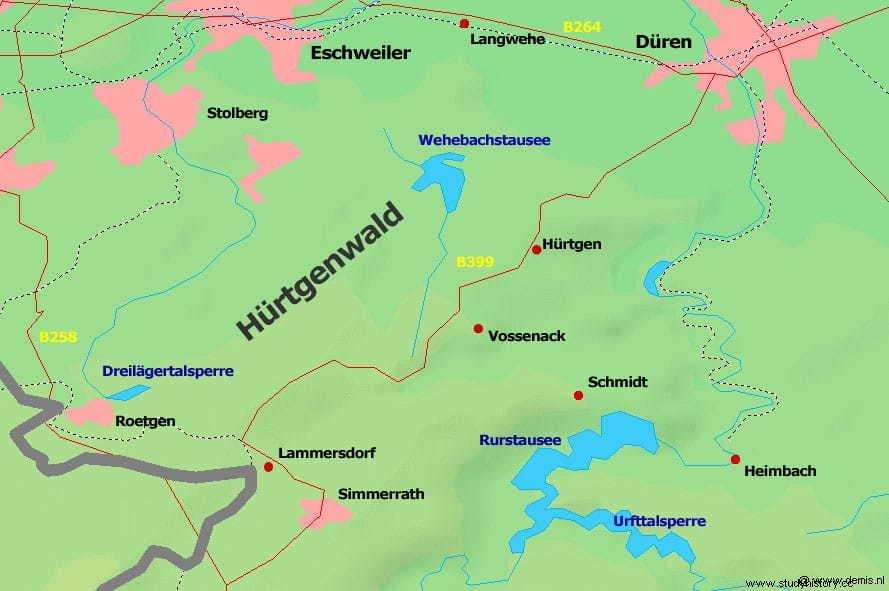
The main point of interest of these is the Museum Hürtgenwald 1944 und im Frieden , opened in 1983 rehabilitating an old stone barn. It is joined by three cemeteries with the bodies of those who fell not only during the war but also afterwards, since there were abundant white phosphorous ammunition left that caught fire in the summer of 1945 and the land strewn with mines caused a hundred victims when there were already finished the fight.
Another attraction is made up of the bunkers that made up the Siegfried Line and a couple of monuments. One is a circular memorial sculpture, made of stone and titled A Time for Healing , which was erected on the Kall trail bridge in 2004, on the occasion of the 60th anniversary of the ceasefire. The other, more emotional and curious, is a bronze plaque that the Americans dedicated to German Lieutenant Friedrich Lengfeld, who died while helping an enemy soldier wounded by a mine.
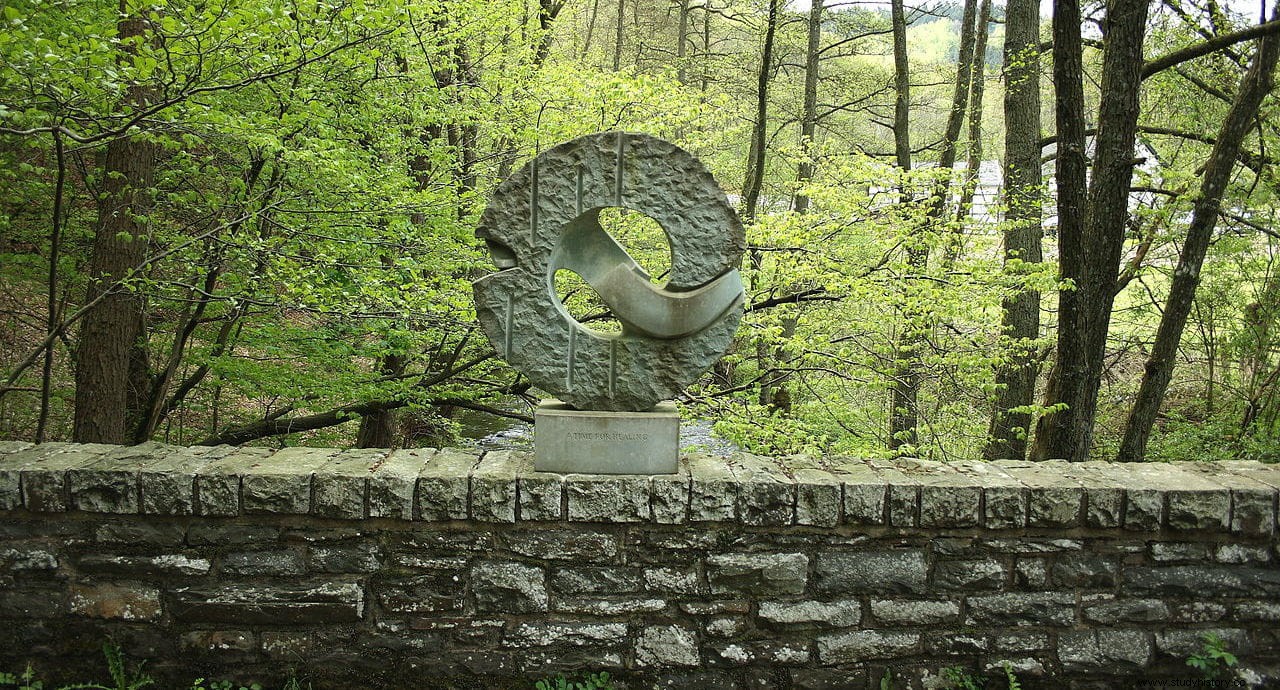
As we recently saw in the article dedicated to Digby Tatham-Warter, Operation Market-Garden planned to surround the Siegfried Line to the north, crossing Belgium and Holland thanks to the capture of its bridges; but the failure forced the Allies to assume that they had to cross the Rhine with the predictable fierce German opposition. The point chosen to open a breach was Aachen, where the First United States Army penetrated. (US First Army) led by General Courtney Hodges, who was part of Omar Bradley's Twelfth Army Group and who had already been endorsed by his success in capturing Cherbourg and Paris.
Only that the German Heeresgruppe B opposed him. (Army Group B), commanded by Field Marshal Walther Model, a veteran of the Eastern Front, an expert in blitzkrieg with armor, and who had enough influence with Hitler to have convinced him to back down and reorganize the defense, something that proved successful after his success in rejecting the aforementioned Operation Market-Garden. That yes, neither he nor Von Rundstedt could dissuade the Führer that the projected offensive of the Western Front, which would later be known as the Battle of the Bulge, had no chance of final success, given the scarcity of resources available to the Wehrmacht in these moments.
Model proposed an alternative plan but was not listened to; the offensive had to be carried out. So if, on the one hand, the Allies intended to continue advancing towards the Rhine, as Operation Queen foresaw, for which they had to prevent the Germans from sending reinforcements to the gap in Aachen, on the other, their adversaries had to stop said advance, since it hindered their counterattack plan.
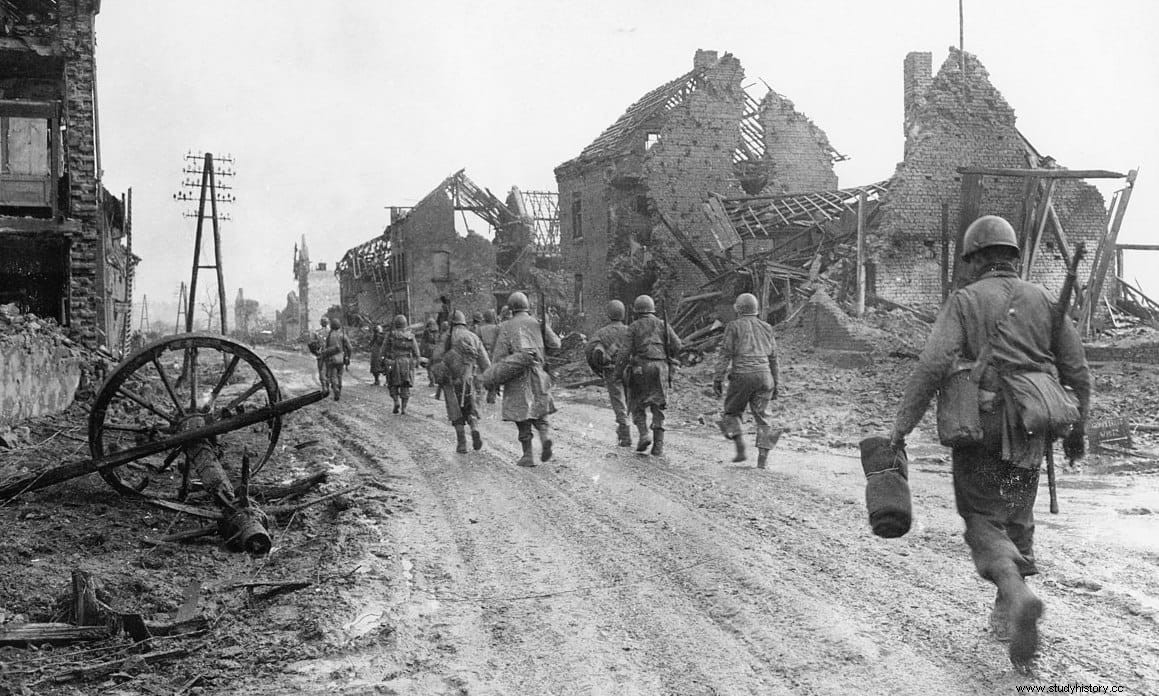
To do this, the Teutons had three weapons:the Ruhr dam, which they could open by flooding the land; the Westwall , which is what they called the aforementioned Siegfried Line; and the Hürtgen forest, whose rugged orography was reinforced by the cold weather, which would soon materialize in snow (and this in mud, swamping the terrain).
In that labyrinth of conifers and vegetation, a natural obstacle for tanks and motorized vehicles in general, numerous fortifications were built with which Model's soldiers could fight under cover, thus partially compensating for the numerical superiority of the enemy, which was overwhelming. .
The Americans numbered about 120,000 men (13 divisions, of which 7 were infantry, 3 airborne, and 3 armored, plus a Ranger battalion) to 80,000 Germans (14 divisions, 12 infantry, one parachute, and one armored), although the latter started out being much less -only two divisions- and had to increase their number with successive reinforcements.
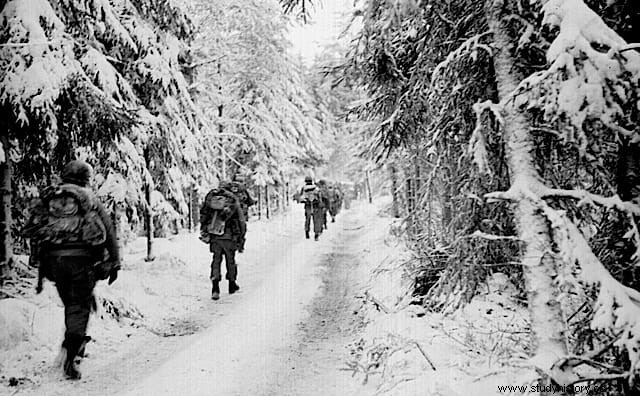
In mid-September the Americans launched their attack towards Schmidt and Monschau, taking Schevenhütte and Lammersdorf; but the Germans became strong in the forest and stopped them, causing thousands of casualties throughout that month and half the next. That's why a battalion of Sherman tanks was sent. that, however, could only advance along the aforementioned Kall path, which runs parallel to the river and, consequently, became a trap based on mines and mortar fire.
After two days, barely a kilometer and a half had been covered, so an operation to clear the area of foliage that flanked the path became essential. That was easier said than done, as autumn brought such bad weather that air support was not allowed until well into November.
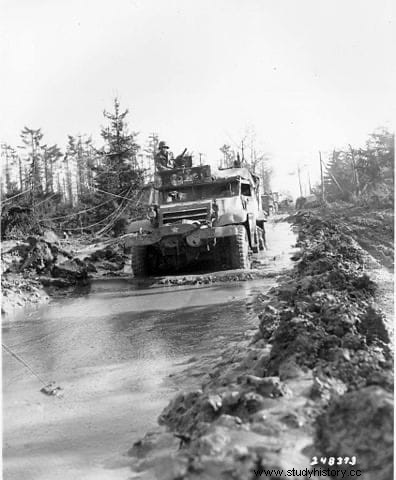
Still, the Americans managed to capture Simonskall, Vossenack, Kommerscheidt, and Schmidt. Then a withering counterattack by the 116th Panzer Division drove them back and lost the positions gained on the trail and Schmidt. The number of wounded on both sides was such that it was then that a ceasefire was negotiated on the Kall bridge, the one commemorated by the monument, to attend to them. In that sense, it can be said that the Americans were very limited, lacking supply routes, so the German doctors took care of many enemies.
On 14 November fighting resumed, with VII Corps - joined by V days later - bent on clearing Hürtgen Forest. The cannons and machine gun nests hidden in the undergrowth, once again made a carnage causing three hundred casualties in seventy-two hours. The cannon fire sent thousands of splinters flying like rain, forcing Americans to hug trees instead of throwing themselves on the ground.
Again the help of the Sherman was requested. , but the difficulties for them to break through were joined by those that remained to send supplies and evacuate the wounded, due to the mud that covered the roads. And there was an even worse one:the Teutons received two reinforcement divisions. Consequently, during the remainder of the month, it was barely possible to advance half a kilometer a day.
On the 29th, the Americans took Langerwehe-Merode and on December 6 the Rangers did the same with Hill 400 (named for its altitude). Both positions were recaptured by the Germans three days later, in a counterattack by Von Rudstedt, since, being on a high and fortified level (a bastion was built on the remains of a medieval castle), the hill was very valuable. Likewise, on the 13th Kesternich was also conquered and… lost shortly after. It was the final point of the battle of the Hürtgen Forest, since on December 16 the Teutonic Wacht am Rhein offensive began in the Ardennes. , which absorbed its participants.
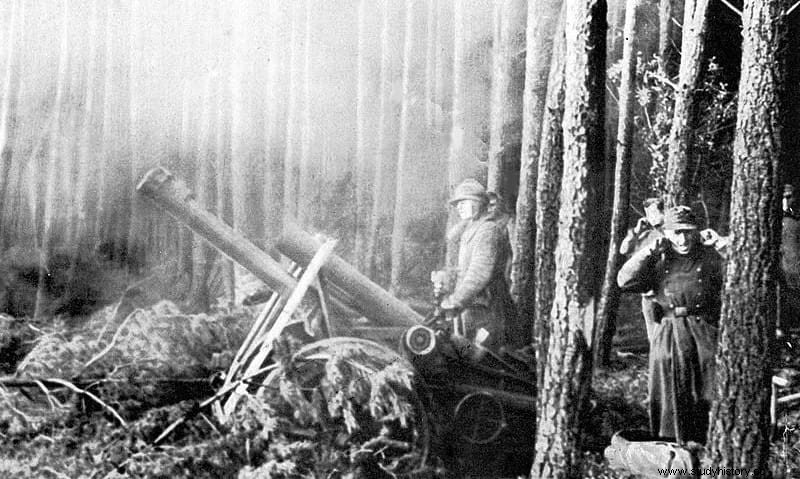
To the Ardennes, the Wehrmacht assigned half a million men (about thirty divisions, practically) and almost two thousand tanks, while the Luftwaffe supported with two thousand four hundred planes. The northern part of the action was around Monschau, where it was possible to penetrate a hundred kilometers between the enemy lines. However, as Model had warned, the lack of fuel stopped the panzers and gave the Americans time to mass defense troops, including help from their allies, so that the ultimate goal, which was to reach Antwerp, was far away. .
In February of the following year, the Americans resumed Operation Queen, again attacking the Hürtgen forest. With the adversary already in retreat, on this occasion they were able to cross the place with less problems and on the 10th they seized the Ruhr Dam, in a combined movement with the Ninth Army (which did not have it so difficult) and the British XXX Army in charge of Operation Clipper (which had achieved its goal of reducing the so-called Geilenkirchen Salient). They then crossed the Ruhr, leaving the road to the Rhine clear.
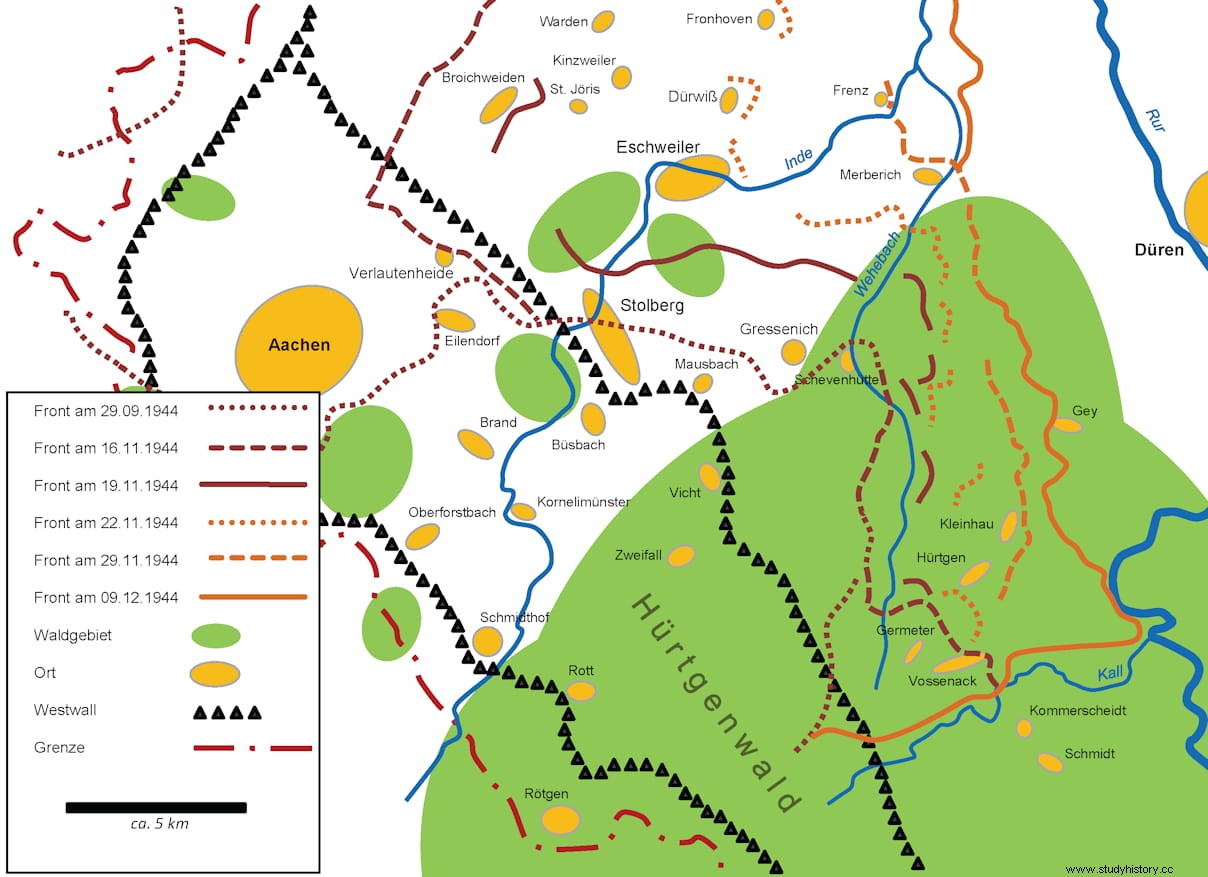
The fighting in the forest was so agonizing that the two sides together accumulated a quarter of a million casualties, including dead, wounded and sick. There are no specific records of the German losses, which are estimated at around twenty-eight thousand, but the US troops suffered thirty-three thousand, to which nine thousand more had to be added due to illness, accidents and frostbite.
All this, a reflection of practically three consecutive months of fighting (five, if the two of 1945 are included), for which reason it is considered that the Hürtgen Forest was the longest battle ever fought by the US army alone and also the most durable of World War II on German soil.
